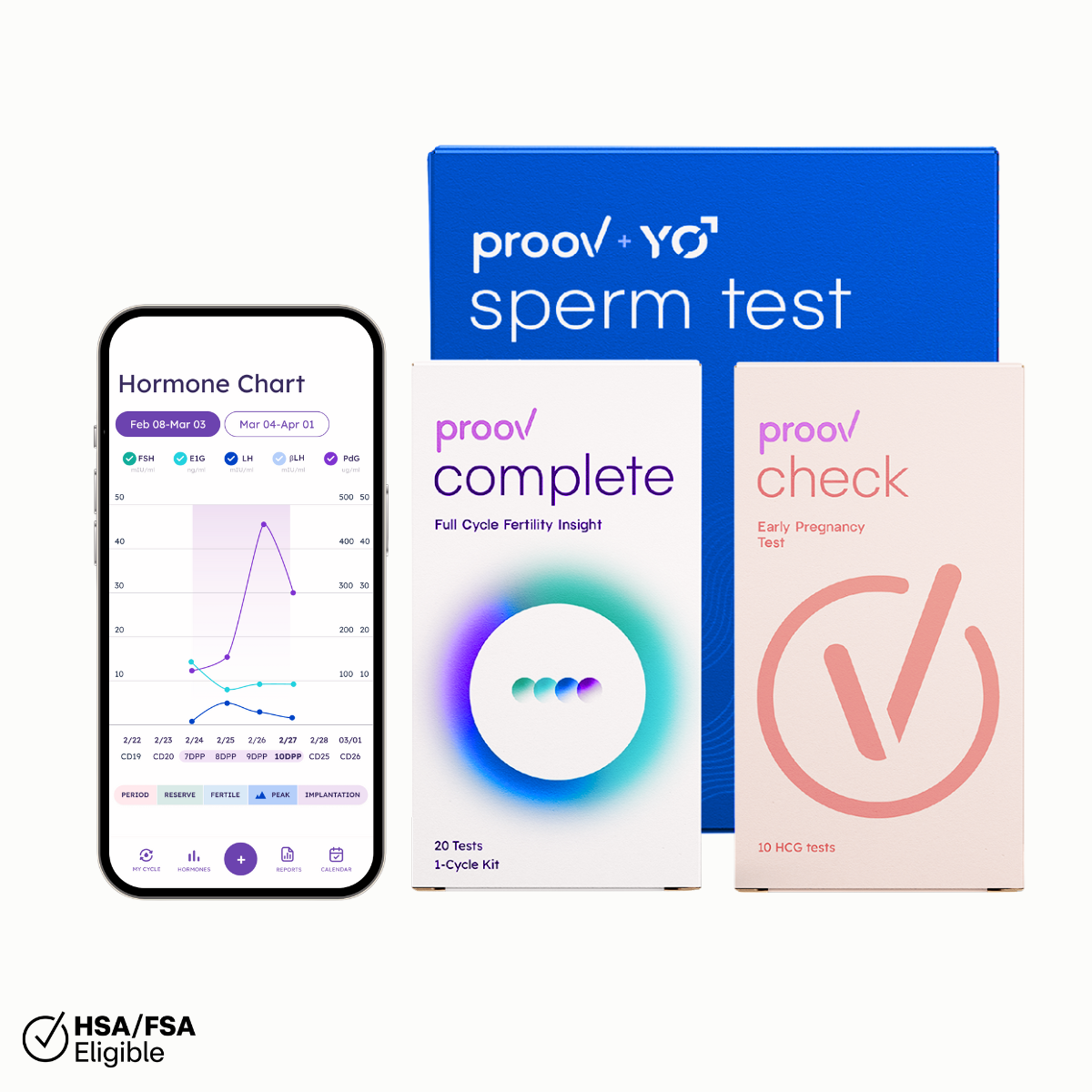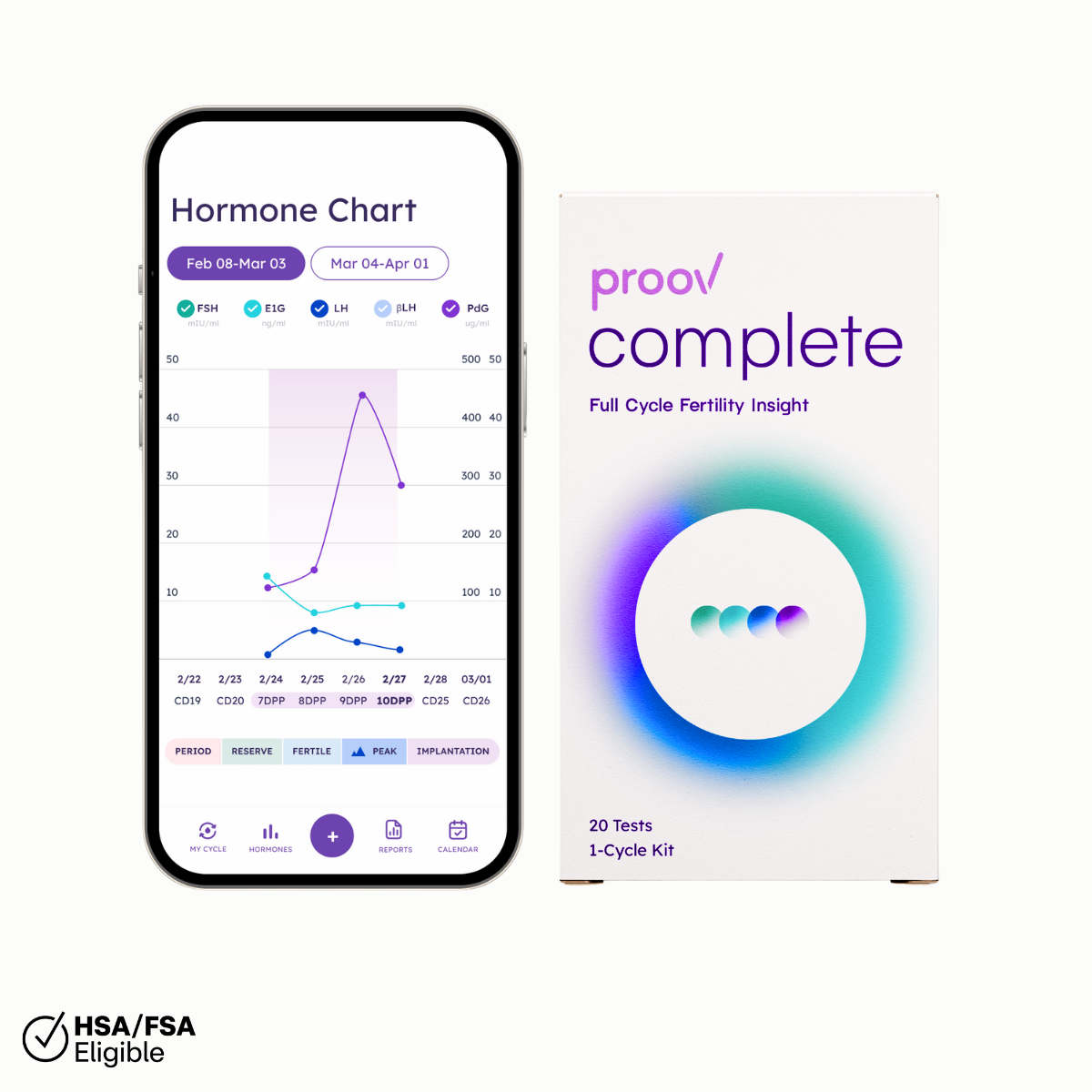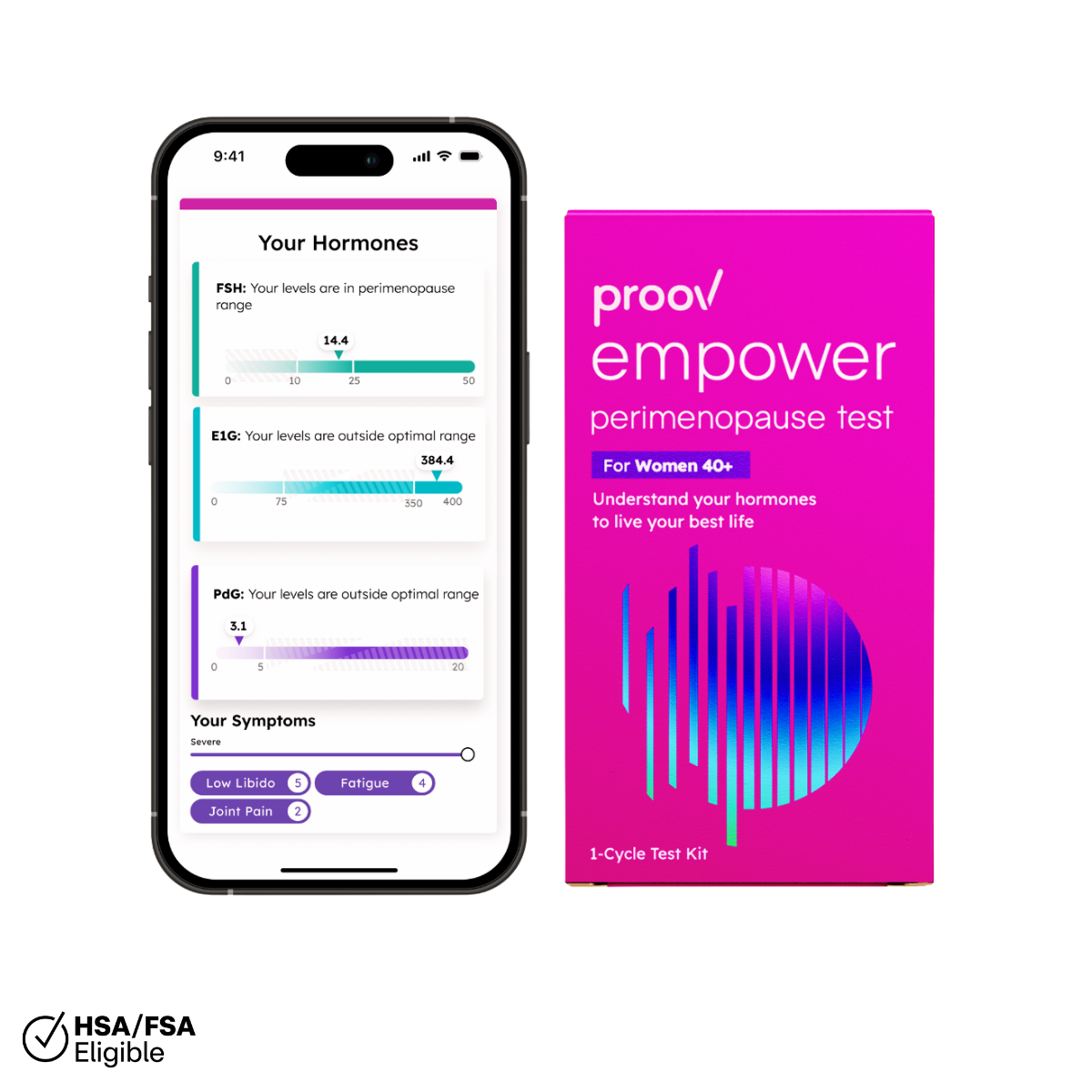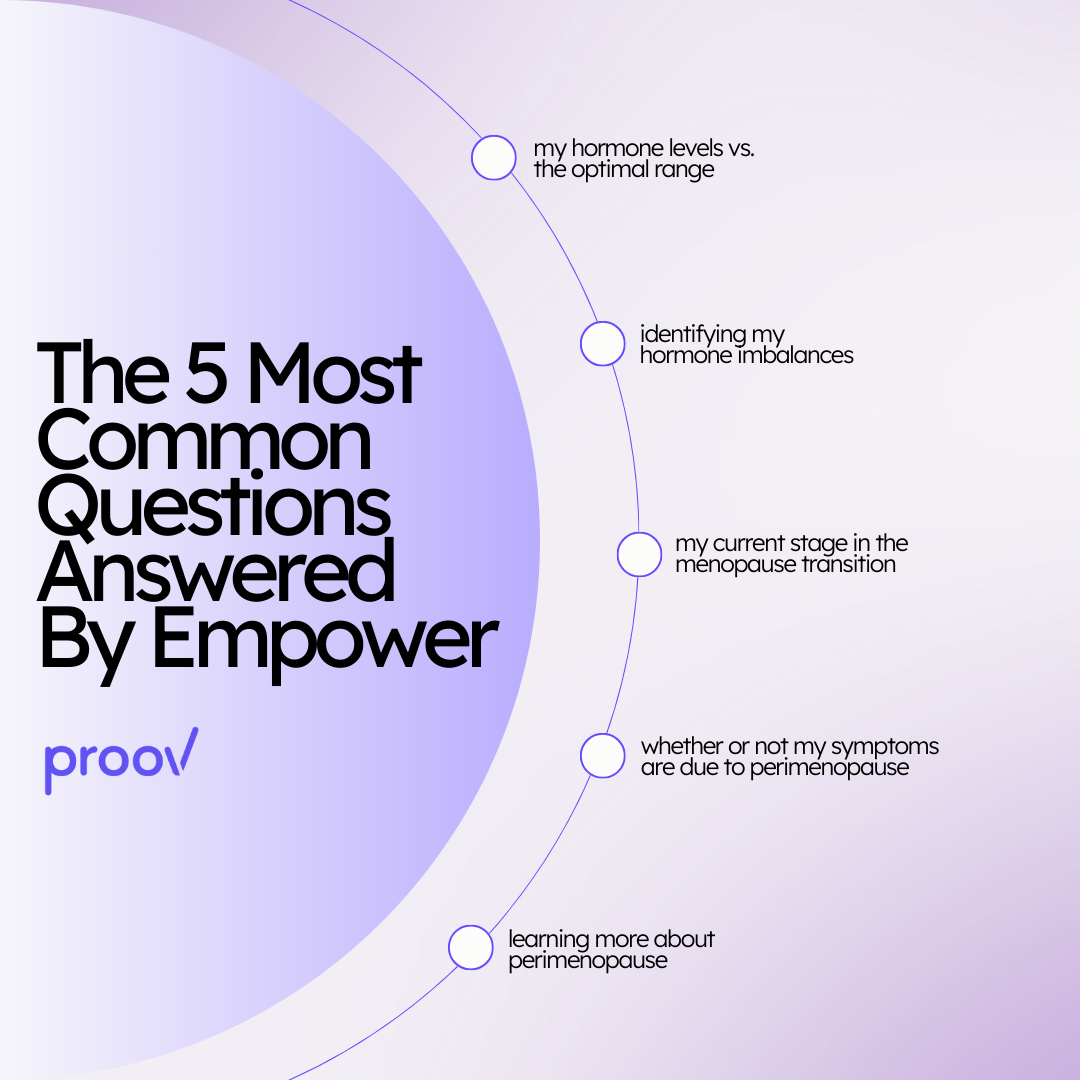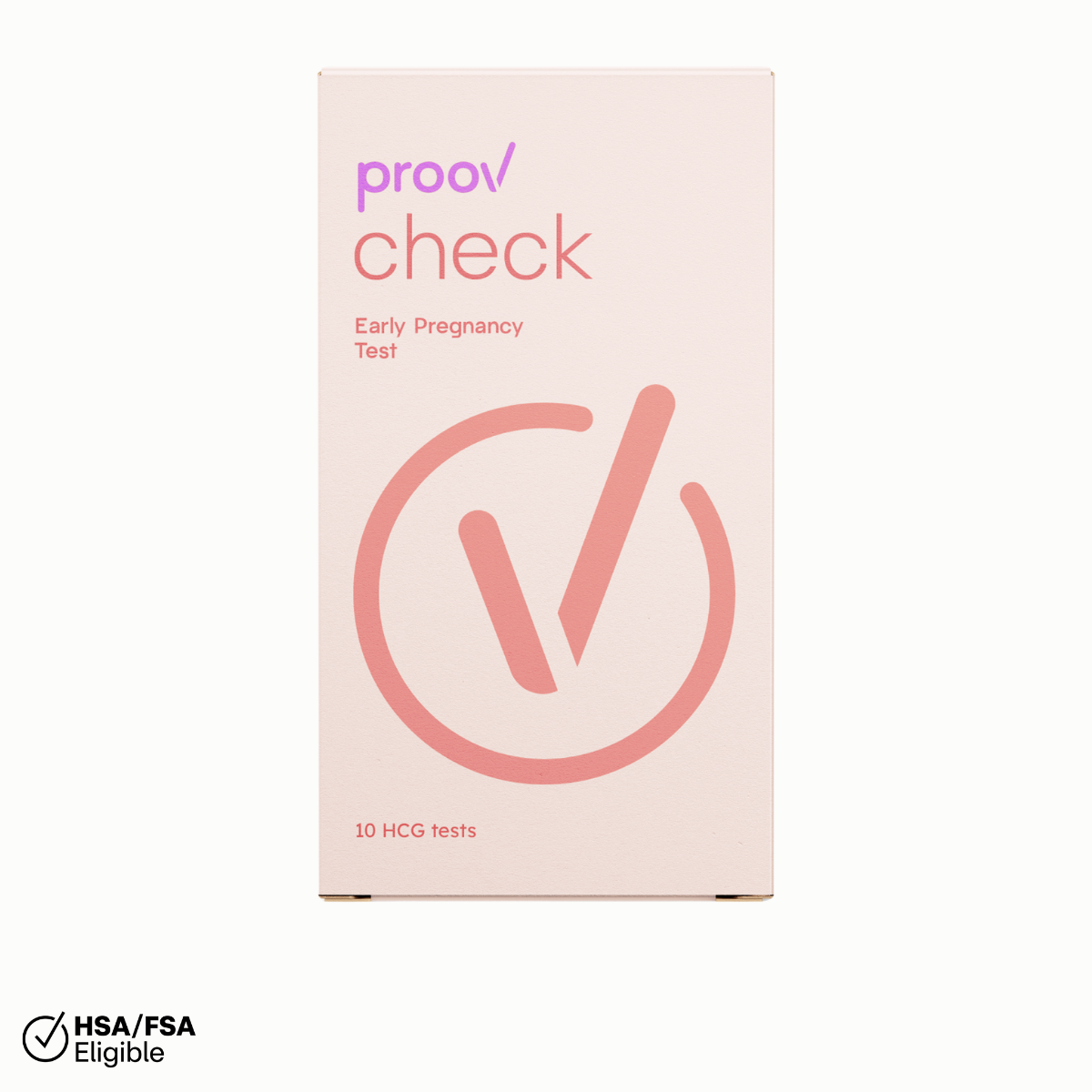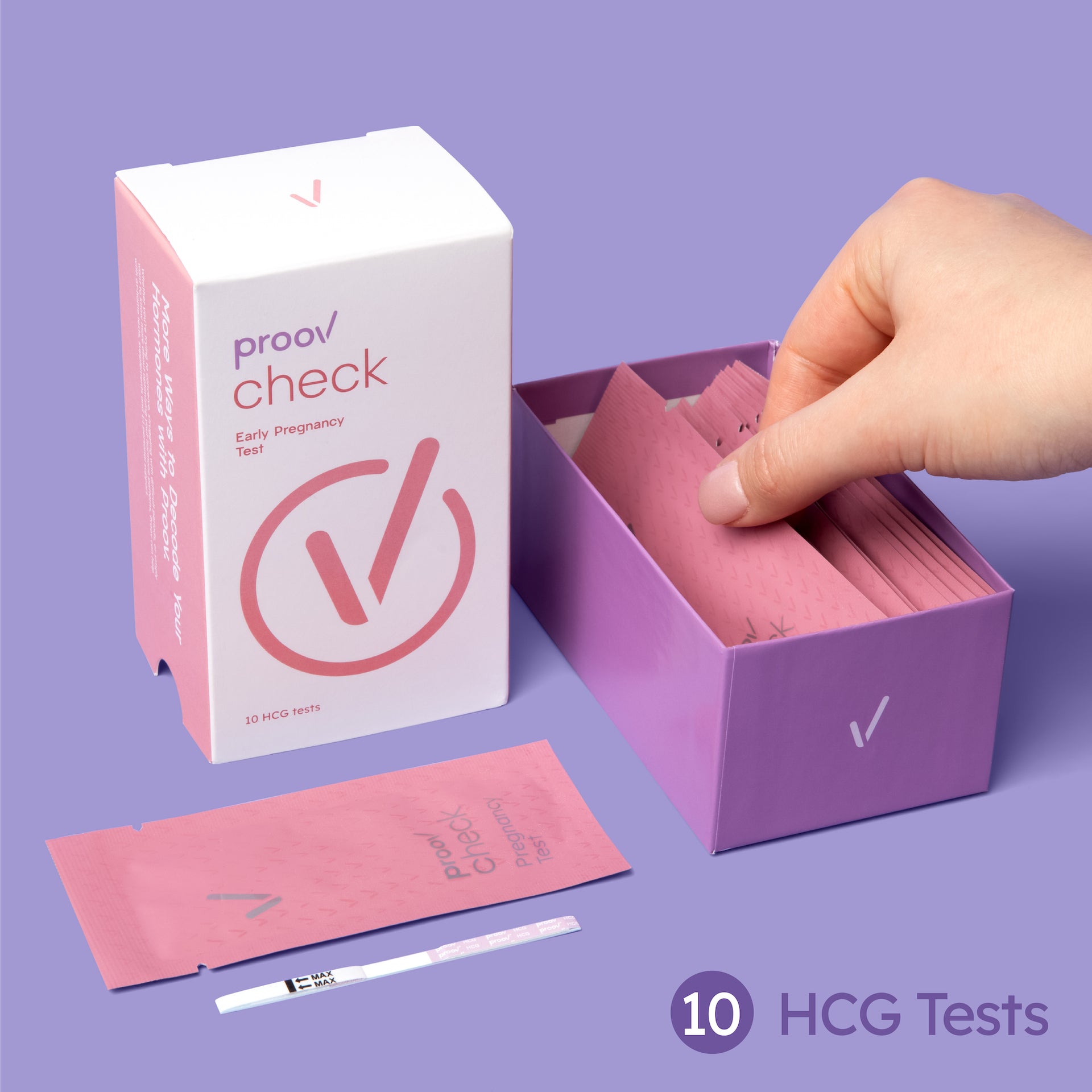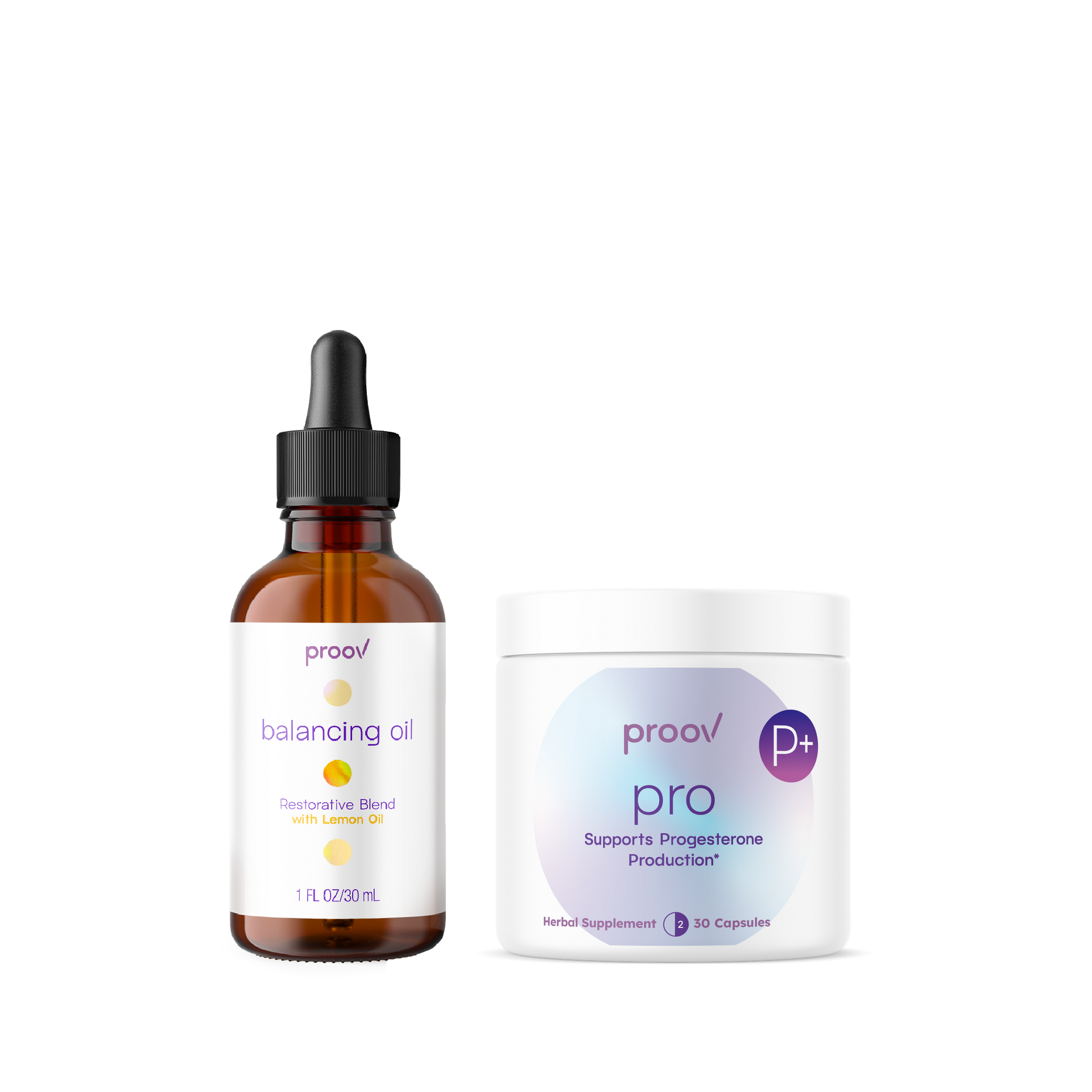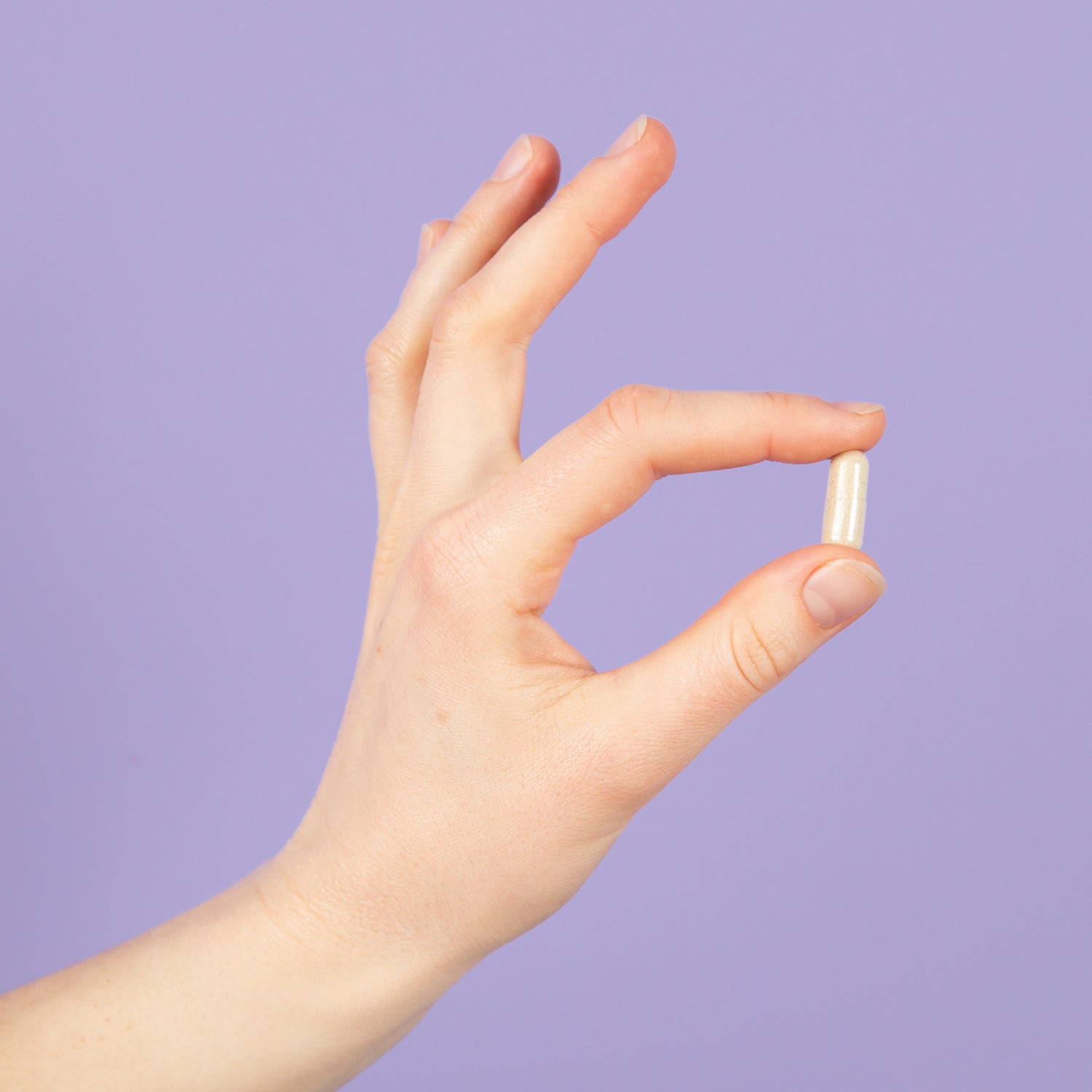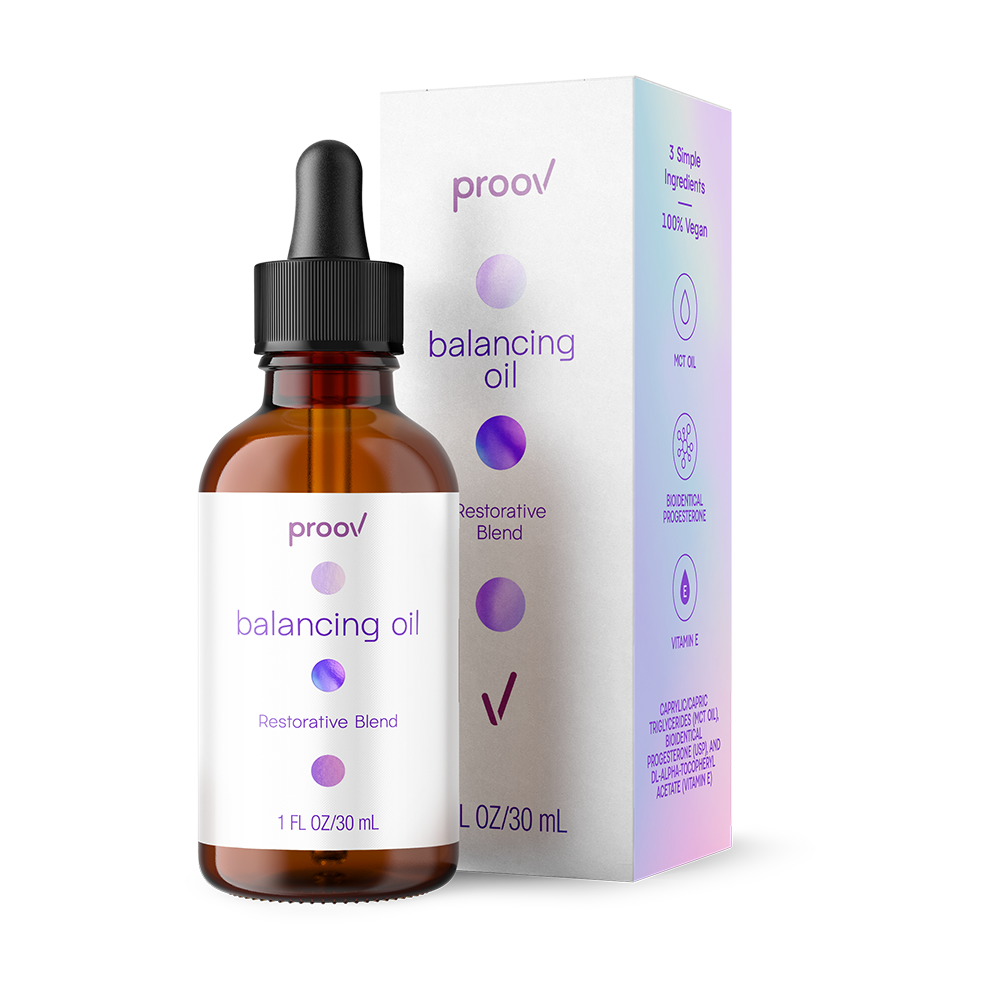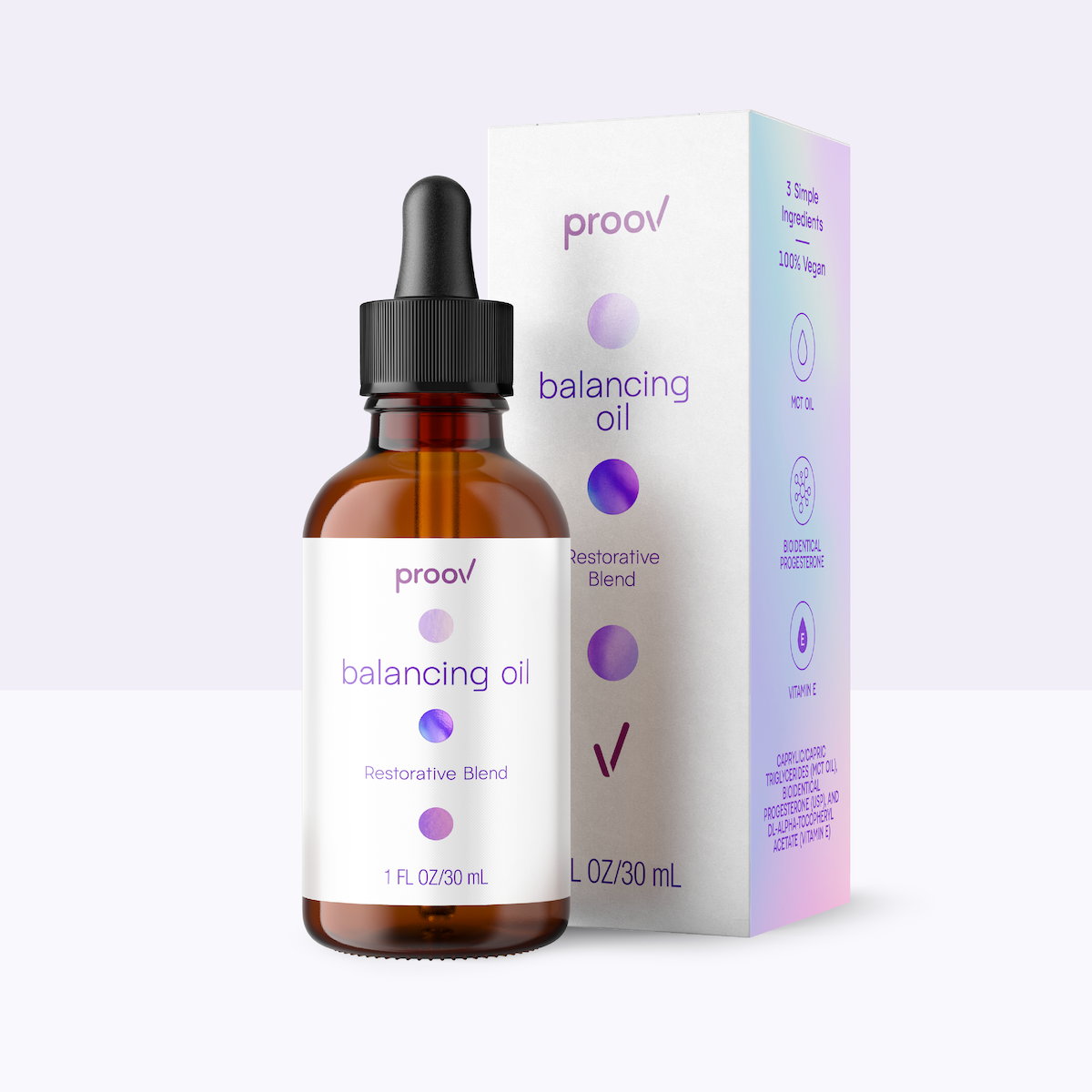Written by: Paloma Health
One month, your menstrual period shows up early, and then lasts for two whole weeks! Another month, it totally ghosts you -- like a flaky friend. You wake some nights at 3 a.m., drenched in sweat. You’re also having mood swings that seemingly come out of nowhere! And what about those times when your brain hits the pause button and you forget what you’re saying – mid-sentence!
Most people think that these are symptoms of menopause. Surprise! They actually show up long before, during perimenopause.
During perimenopause, you’re still menstruating, but estrogen and progesterone levels start fluctuating, resulting in unpredictable and irregular periods. Perimenopause can last anywhere from a few months to ten years. On average, it begins around age 47, but for some, the chaos starts as early as the late 30s, while others don’t feel a thing until their early 50s.
Some women breeze through perimenopause with just an occasional hot flash or minor changes in their menstrual period. Others, however, face a marathon of stubborn, debilitating symptoms that can seriously disrupt everyday life. This is where hormone replacement therapy (HRT) enters the conversation. HRT can offer profound relief—but it isn’t for everyone, and the decision isn’t always clear-cut.
Here’s the hopeful part: testing, information, tools, and perimenopause care have never been more convenient. Today, you have more ways than ever to track your health, understand your body, and get tailored support.
Understanding Perimenopause
Your reproductive system runs on a delicate balance of hormones, and during perimenopause, those hormones start to fluctuate. Progesterone typically drops first, then estrogen starts fluctuating, and your once-regular menstrual cycle becomes more erratic. FSH (follicle-stimulating hormone) generally rises and fluctuates as the ovaries produce less estrogen, prompting the brain to stimulate them more. LH (luteinizing hormone), which triggers ovulation, also rises but less consistently, leading to irregular or skipped ovulation. These changes—rising and fluctuating FSH and LH, declining progesterone, and fluctuating estrogen—contribute to the hallmark signs of perimenopause:
-
Hot flashes and night sweats: your internal thermostat has lost its calibration.
-
Mood swings: because your brain’s neurotransmitters pay close attention to estrogen.
-
Brain fog and memory slips: cognitive hiccups linked to hormone changes.
-
Vaginal dryness and discomfort: estrogen weakness shows up in tissues, too.
-
Irregular cycles: shorter, longer, lighter, heavier, and missing periods.
-
Sleep issues: frequent waking, early waking, and insomnia.
The official definition of menopause is one full year without a period. Perimenopause is the unpredictable transition period leading up to that point. Knowing this difference matters because symptoms start before menopause—and that’s when many women consider hormone therapy.
Can You Test for Perimenopause?
Wondering how to know if you’re in perimenopause? Since the symptoms can sneak up, vary so much, and overlap with conditions like hypothyroidism, there isn’t one definitive test. And standard hormone testing might check a hormone level, but when hormones fluctuate so much, one test result doesn’t reveal much. That’s where tools like Proov’s at-home hormone testing come in handy. Unlike single blood tests that only give a snapshot, Proov Empower measures four key hormones—estrogen, progesterone, FSH, and LH—multiple times throughout your cycle using easy, at-home urine tests. You simply collect first-morning urine samples on specific days guided by the Proov app, which then provides a detailed hormone timeline. This approach helps reveal whether you’re still ovulating, how your hormones fluctuate, and where you might be along the perimenopause journey. By testing over several days, you get a much clearer picture than a one-time blood draw, empowering you with personalized data to manage your health with confidence. Proov can even connect you with medical providers like the experts at Paloma Health if you want medical care for symptom management or HRT.
What Is HRT?
Hormone replacement therapy isn’t about returning to the hormone levels of your 20s—it’s about smoothing out the ups and downs of estrogen and progesterone when your body’s output becomes erratic.
Two main approaches exist:
-
Systemic HRT, via pills, patches, gels, or injections, which circulate throughout the body to calm widespread symptoms like hot flashes.
-
Local HRT, often a vaginal ring or vaginal estrogen cream applied locally, aimed at issues like dryness or pain with intimacy.
If you still have a uterus, estrogen comes paired with a form of progesterone to protect your uterine lining. Without a uterus, you typically use estrogen alone.
And then there’s the buzzword everyone’s talking about: bioidentical hormone therapy. These are hormones that are molecularly identical to the estrogen and progesterone your body naturally produces. Some FDA-approved hormone therapies fall into this category, while others – like the popular drugs Premarin, Prempro, and Premphase – are synthetic hormones. The choice between bioidentical and synthetic HRT depends on your unique health needs, preferences, and how closely you want your treatment to be monitored.
How HRT Might Help You
HRT has a reputation for being life-changing—and for many, it truly is. Benefits can include:
-
Reducing hot flashes and night sweats so that you can feel more comfortable and in control.
-
Improving sleep quality, so you can rest through the night and wake up refreshed.
-
Supporting mood and cognition, bringing back a sense of normal mental sharpness.
-
Easing vaginal dryness or discomfort, which can impact comfort and intimacy.
-
Safeguarding bone density and reducing the early risk of osteoporosis.
-
Potentially helping your heart and brain health, especially when you start HRT before age 60 or within 10 years of menopause.
Imagine going from dragging through your day, snapping at your loved ones, and needing two naps just to be functional—to feeling rested, balanced, and able to return to doing things you actually enjoy! That’s the level of change many women describe after starting the right HRT plan.
Things to Keep in Mind About HRT
The conversation around HRT got complicated after the Women’s Health Initiative (WHI) study in the early 2000s. Back then, headlines screamed about the risks of HRT, and many women stopped their therapy, literally overnight. Today, researchers interpret the trial differently: risks exist, but they vary depending on a woman’s age, health history, and the specific type of HRT prescribed.
-
Breast cancer risk: There is a slightly higher risk of breast cancer with long-term use of combined estrogen and progesterone therapy, while the risk is lower when using estrogen alone.
-
Blood clots and stroke: These risks are more common when taking oral estrogen, but they occur less frequently when estrogen is delivered through patches, creams, or gels.
-
Gallbladder issues: Hormone therapy can slightly increase the risk of gallbladder problems.
-
Minor side effects: Some people may experience bloating, breast tenderness, or light spotting as side effects.
-
Bioidentical vs. synthetic hormones: Research suggests that bioidentical hormones may carry a lower risk of specific side effects, such as blood clots, and are often better tolerated than synthetic hormones. Many women’s hormonal specialists prefer to prescribe bioidentical hormones because they’re chemically identical to the body’s own hormones, tend to be better tolerated, and may offer a more natural balance with fewer risks and side effects for some women.
None of this means that hormone replacement therapy (HRT) is “bad.” HRT is nuanced, and its use is best weighed against the severity of your symptoms, your family history, and your individual risk profile. For many women, the benefits clearly outweigh the risks. Smart, experienced providers will typically recommend using the lowest effective dose, in the safest form, for the shortest amount of time necessary to relieve your symptoms.
Is HRT the Right Fit for You?
Should you try HRT during perimenopause? Ask yourself these questions:
-
Are your symptoms disrupting your daily life?
-
Are you in the “sweet spot” for starting—typically under 60 and within 10 years of menopause?
-
Do you have a personal or family history of conditions that might raise your risk (like breast cancer, blood clots, or stroke)?
-
Have you tried other non-hormonal strategies and found them insufficient?
-
Are you prepared to work with a provider to monitor your therapy and adjust doses as needed?
-
Do you understand the potential benefits and risks, and do you feel comfortable with them?
Assessment is about blending self-awareness with medical guidance. Symptoms and bloodwork together help paint the picture, but your quality of life is a crucial factor.
The good news: HRT isn’t a lifelong contract. You can start, see how you feel, and adjust or stop if it’s not the right fit. Think of it less like a tattoo and more like a hairstyle—you can try it on, see how it works, and change it if it’s not for you.
Ways to Support Perimenopause With or Without HRT
Many women seek lifestyle changes and natural remedies to alleviate perimenopausal symptoms, either to complement or as an alternative to HRT. These include:
-
Cooling Layers: Dressing in layers allows for better temperature regulation, helping to manage hot flashes.
-
Sleep Hygiene: Establishing a regular sleep routine, creating a comfortable and cool sleep environment, and limiting screen time before bed can improve sleep quality.
-
Nutrient-Rich Diet: A balanced diet rich in fruits, vegetables, whole grains, healthy fats, and lean proteins supports overall health and can mitigate some perimenopausal symptoms.
-
Regular Physical Activity: Engaging in regular exercise can help reduce the frequency and severity of hot flashes, as well as improve your mood and sleep quality.
-
Vaginal Moisturizers and Lubricants: Topical non-prescription products can help ease vaginal discomfort for some women.
-
Stress Management Practices: Techniques such as mindfulness meditation, yoga, and deep breathing exercises can help manage stress, minimize hot flashes, and reduce symptoms like anxiety and irritability.
While not a cure-all, certain supplements and herbs may also offer relief from perimenopausal symptoms:
-
Maca: An adaptogenic root that may boost energy and libido, reduce hot flashes, and help balance hormones.
-
Black Cohosh: Traditionally used to alleviate hot flashes and night sweats.
-
Soy Isoflavones: Contain phytoestrogens that may help balance hormone levels.
-
Red Clover: Rich in isoflavones, it may reduce hot flashes and improve vaginal health.
-
Omega-3 Fatty Acids: Found in fish oil, these fatty acids may help reduce inflammation and support heart health.
-
Evening Primrose Oil: Sometimes used for menopausal symptoms, though research is mixed.
-
Ginseng: May help with mood symptoms and sleep disturbances.
-
Chaste Tree (Vitex): Known for supporting PMS symptoms and may improve mood symptoms during perimenopause.
-
Flaxseed: A source of lignans, which may help balance hormones and alleviate mild menopausal symptoms.
These options can be used alone or alongside HRT, depending on individual needs and preferences.
Also, don’t forget that you’re not limited to one treatment path. Whether you choose lifestyle adjustments, supplements, non-hormonal medications, or HRT, there are multiple avenues to explore for relief. It’s essential to consult with a healthcare professional to determine the best approach tailored to your unique health profile and preferences.
What to Expect If You Start HRT
If you begin HRT, your body may thank you sooner than expected.
-
Hot flashes often improve within a few weeks.
-
Irregular periods can start to become more predictable within two to three months.
-
Sleep, mood, and brain fog typically get better gradually over a month or two.
-
Vaginal discomfort can resolve quickly, and local HRT usually brings faster relief than systemic therapy.
Doctors recommend regular follow-up, from breast screenings to bone scans. Expect some trial and error: dose tweaking and delivery method adjustments are normal. That refinement process is worth it if it helps you reclaim your energy, sanity, and sense of self.
Tips for Discussing HRT with Your Healthcare Provider
The best appointments happen when you come prepared. Track your symptoms, note how they impact your life, and create a list of questions. Bring your curiosity, your honesty, and a willingness to partner with your provider.
Helpful questions include:
-
Am I a good candidate for HRT?
-
Which type of HRT is right for me?
-
What should I monitor while taking it?
-
Are there lower-risk options if I’m worried about side effects?
And remember: you deserve a provider who listens. If your provider brushes off your concerns, it’s time to find someone who will listen, value your input, and work with you to find solutions that genuinely help.
Hypothyroidism During Perimenopause
Here’s something important to keep in mind: hypothyroidism often shows up in midlife at the same time as – and with symptoms similar to – you guessed it…perimenopause! Basically, your thyroid slows down and doesn’t produce enough hormones. Because thyroid hormones affect your energy, mood, and metabolism, even a slight slowdown can leave you feeling exhausted, irritable, mentally foggy, or with unexpected weight gain. Sound familiar? These are the same signs many people notice during perimenopause, so it’s easy to mistake one for the other.
The good news is that finding out if your thyroid is underactive is not difficult. A thyroid blood test panel—Thyroid Stimulating Hormone (TSH), Free Thyroxine (Free T4), Free Triiodothyronine (Free T3), and Thyroid Peroxidase Antibodies (TPOAb)—can determine what’s going on. If hypothyroidism is the culprit, treatment usually means taking thyroid hormone replacement medication to get back to optimal levels. Once that’s in place, you may notice your energy, mood, and focus start to bounce back.
Why does this matter to you? Untreated thyroid issues can make perimenopause symptoms feel worse or more confusing. And if you’re thinking about hormone replacement therapy (HRT), knowing your thyroid status first is truly important. Getting your thyroid balanced provides a clear picture of your health and helps ensure that any HRT plan works safely and effectively for you.
Moving Forward in Perimenopause
Perimenopause can be wild. One day you feel fine; the next you’re overheating in a meeting, crying at a commercial, and forgetting where you parked (again)! But here’s what’s constant: you are not broken. This stage can be messy, but it’s normal—and help is available.
For many women, HRT is a game-changer, restoring quality of life, protecting bones, and calming the chaos. For others, lifestyle shifts or non-hormonal therapies may be the right path. What matters is that you get to make the decision.
And thankfully, making decisions has never been easier. With today’s resources—like at-home hormone tracking through Proov, and home thyroid tests, and comprehensive telemedicine support through Paloma Health for thyroid care and personalized HRT—you have convenient, modern tools and personalized care to guide your journey.
Perimenopause is just one chapter. With the right support, it doesn’t have to be the one that defines you.
Key Takeaways
-
Perimenopause often starts years before menopause, causing hot flashes, mood swings, brain fog, and irregular periods.
-
Fluctuating hormones—dropping progesterone, variable estrogen, and rising FSH/LH—drive most symptoms.
-
At-home hormone tests, such as Proov, reveal ovulation and hormone patterns more accurately than single blood tests.
-
HRT can ease symptoms and improve quality of life, but it isn’t suitable for everyone.
-
Lifestyle changes, stress management, and certain supplements can help, whether or not you are using HRT.
-
Thyroid testing and treatment are crucial, as hypothyroidism can mimic or worsen perimenopause symptoms and affect HRT effectiveness. Paloma Health offers convenient home thyroid testing and telemedicine care for an underactive thyroid.
Sources
Evidence Supporting HRT as Safe and Effective in Early Menopause - JAMA
Diagnosis and Treatment of Perimenopausal Syndrome - Frontiers in Endocrinology
Hormone Replacement Therapy and Breast Cancer Risk: Long-term Follow-up from the Women’s Health Initiative - NCBI
Hormone Therapy and Heart Health - Penn State Medicine
Recent Trends in Menopausal Hormone Therapy Use in the US - JAMA Health Forum
Rethinking Menopausal Hormone Therapy - Circulation
Contemporary Menopausal Hormone Therapy and Risk of Venous Thromboembolism - The BMJ
The New Science of Menopause - Nature
Bioidentical Hormone Replacement Therapy - Paloma


